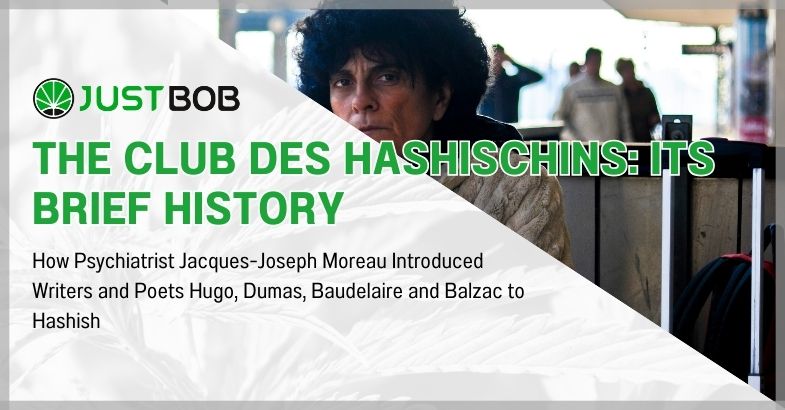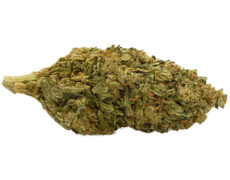Modified on: 04/12/2024
How Psychiatrist Jacques-Joseph Moreau Introduced Writers and Poets Hugo, Dumas, Baudelaire and Balzac to Hashish
Today we will tell you about a mysterious circle that arose in Paris in the mid-nineteenth century , made up of intellectuals, painters, writers and poets of the calibre of Victor Hugo , Alexandre Dumas , Honoré de Balzac , Charles Baudelaire and Eugène Delacroix .
Artists of every age have always explored the field of common sensory perception, curious to move the limits of the visible, never settling for the banal description of reality.
-
 SMALL & BIG
SMALL & BIGBUBBLEGUM
Starting from: 1,25CHF/gIndoor | CBD – CBDA <22%
Grams3 5 10 20 50 100 -


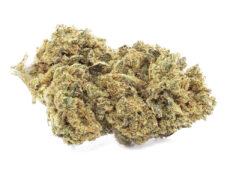
DO SI DOS
Starting from: 2,00CHF/gIndoor | CBD – CBDA < 19%
Grams3 5 10 20 50 100 -


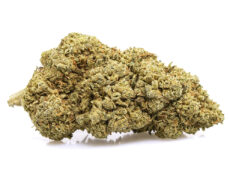
ROYAL GG#4
Starting from: 2,30CHF/gIndoor | CBD – CBDA < 40%
Grams3 5 10 20 50 100 -


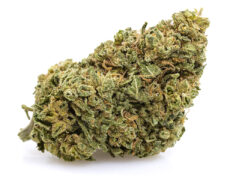
GORILLA GLUE
Starting from: 2,90CHF/gIndoor | CBD – CBDA < 20%
Grams3 5 10 20 50 100
For centuries, intellectuals have been intrigued by psychotropic and psychedelic substances capable of altering mental states and have explored their effects and properties, sometimes succeeding in using these substances for artistic purposes, other times, unfortunately, remaining subjugated and dependent on them.
In this article we will tell you the story of the Club des Hashischins , the historic Parisian group that experimented and explored the effects of hashish, also attempting to use it to stimulate their own creativity .
We will see what these great thinkers thought about hashish , how they were fascinated by it and how they used it to compose their works, and if they really saw in it an ally to further develop their imagination.
Of course, we do not want to encourage the use of illicit substances in any way, this article is intended for purely informative and educational purposes.
For those who want to approach this world, but remaining within the law, we remind you that on Justbob you can find strictly legal articles such as products based on legal cannabis .
Well, ready for this journey through time ? Let’s go!
A Brief History of Hashish in Europe
How did hashish get to Europe? And who introduced it?
Between the 12th and 13th centuries the Crusaders came into contact with the Muslim sect of the Ḥashīshiyya , which means ‘addicted to hashish’.
The current term ‘ assassin ‘ actually derives from hashish, yes, because the hashīshiyya were so violent that the term took on such a negative connotation.
The sect of assassins had its base in the fortress of Alamut, near Qazwin in Persia, present-day Iran, and raged between Syria and Palestine, terrorizing villages with raids and unspeakable violence.
Before being defeated by the Mongols of Genghis Khan , around the middle of the 13th century, it reigned supreme undisturbed, defeating Muslim and Frankish troops on several occasions.
So, until then, Europeans associated hashish with these terrible warriors and their bloody exploits.
But the first time ever, at least according to the most reliable historical sources, that Europeans had to deal with hashish more directly, was during Napoleon’s campaign in Egypt.
In fact, in 1798, French soldiers, to alleviate the physical and psychological pain of war, took to taking hashish .
This substance had long been widespread among Arab populations, and Europeans, unable to find alcohol, as it was prohibited in Islamic societies, began to imitate the natives and experiment with the effects of hashish.
Napoleon , however, did not look favorably on this new custom, in fact he noted that it made the troops weaker and made the soldiers’ spirits lazy, so he limited its diffusion and attempted to stem its success.
Prophetically Théophile Gautier, a well-known member of the club, wrote:
“We wanted to conquer Algiers, instead Algiers conquered us!”
In fact, despite Napoleon’s bans, once the war was over, the military imported significant quantities of hashish into France and introduced many members of Parisian high society to its consumption.
And it is in this historical context that the legendary Club des Hashischins was born .
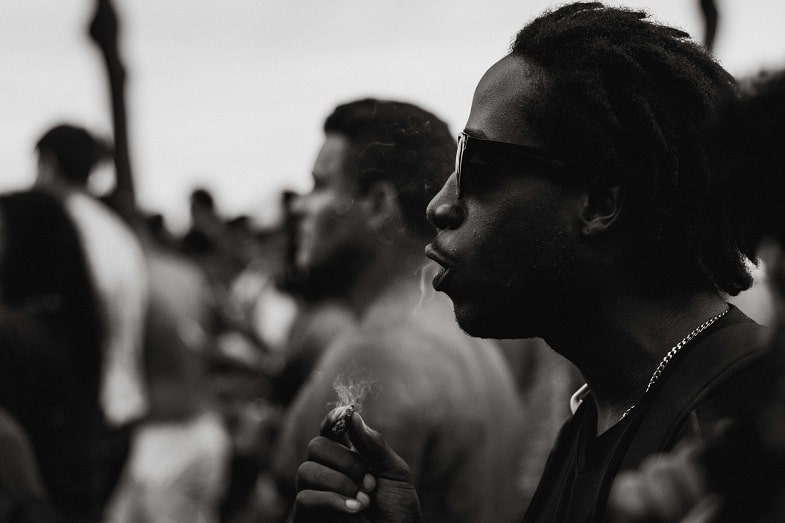

The birth of the Club des Hashischins
The Club des Hashischins was a literary and cultural club founded in Paris by Jacques-Joseph Moreau in 1844.
Moreau was a French doctor and psychiatrist, the first in Europe, as far as we know, to study the therapeutic or simply psychotropic effects of hashish. In short, a true pioneer in the field of cannabis used for medical purposes, especially to treat psychiatric cases.
Moreau himself brought together in his group the best French intellectuals of the time, attracting the curiosity of many artists, painters and poets.
The circle used to meet at the Hôtel de Lauzun, a historic 17th-century hotel overlooking the Seine, and during these long evenings the participants experimented with the effects of hashish, both creatively and medicinally .
Afterwards they talked about it at length, comparing their experiences, discussing their sensations, which were different for each of them, sometimes even negative.
Some realized how useful the substance was for inducing sleep, others took it to be more productive or to stimulate the imagination; others still, however, witnessed negative effects, noted an increase in anxiety and anguish, and after assiduous use even short-term memory lapses.
This circle included poets and writers Victor Hugo , Charles Baudelaire, Théophile Gautier, Alexandre Dumas , Honoré de Balzac , but also the painter Eugène Delacroix.
Many of their works were conceived and created under the influence of hashish and various collectors and critics still today enjoy speculating which work or painting was created under the fumes, it is appropriate to say, of hashish.
Such practices increased the aura of mystery and fascination that these artists enjoyed but also contributed to fueling gossip and slander among ordinary citizens or among censors and moralists of the time.
Already in the mid-nineteenth century, the first prohibitionist movements began to emerge, albeit in an embryonic form, concerned about the spread of psychotropic substances and the effects they could cause among ordinary citizens.
Hashish and other psychotropic substances in some 19th century books
The group met on a monthly basis at the home of the painter Joseph Ferdinand Boissard de Boisdenier at the Hôtel de Lauzun in an apartment owned by Baron Jérôme Pichon.
In the 19th century, psychotropic substances such as opium aroused much interest and curiosity, both in medical and literary circles, becoming a real fashion, almost a status symbol of high society.
In this regard Gautier ironically observed:
“Hashish will eventually replace champagne !”
One of the first books of the period to delve into the effects of narcotic substances is from 1821, we refer to ‘ The Confessions of an Opium Eater ‘ by Thomas de Quincey.
Just a few years later, Doctor Moreau, founder of the Club des Hashischins, studied the effects of hashish by taking it regularly.
Moreau explored the subject further during his travels between 1837 and 1840 in Egypt, Syria and Asia Minor. Upon his return to France, he continued to experiment with it personally and in 1845 he published the book ‘ Du haschich et de l’aliénation mentale ‘, in which he analyzed the relationship between hashish, delusions, dreams and hallucinations in ordinary people and in patients suffering from mental disorders.
This work is considered the first medical-scientific treatise on the subject of narcotics.
Another very important book on the subject is from 1857 and is called ‘ The Hasheesh Eater ‘, although the author Fitz Hugh Ludlow had no connection with the club.
In this autobiographical work the American writer describes the effects of hashish , the psychedelic visions and hallucinations it causes.
Read also: The story of the Hemp Body Car
Gautier’s Experience with Hashischins
In 1843 Théophile Gautier , a well-known bohemian writer belonging to Doctor Moreau’s circle, recounted his experiences with hashish in a long serial entitled ‘ Le Haschich ‘.
In this article Gautier described in detail his visions induced by the drug and summarized his experience in three phases: amplification of the senses, especially hearing, the impression that time was dilating beyond measure and finally the vision of grotesque and frightening images.
The author wrote:
“Within a few minutes, a general numbness invaded me. It seemed to me that my body was dissolving and becoming transparent .
I could clearly see in my chest the haschich I had eaten in the form of an emerald from which thousands of little sparks were coming out; the eyelashes of my eyes were growing endlessly, curling up like golden threads .
I could still see my companions at times, but half men, half plants, with the thoughtful look of ibises standing on one leg, of ostriches flapping such strange wings that they made me writhe with laughter in my corner .”
Adding psychedelic descriptions like:
“In the air were millions of butterflies, dimly luminous, flapping their wings like fans.
Gigantic flowers with crystal reflections, large peonies on beds of gold and silver, rose up and surrounded me with the crackling sound that accompanies the explosion of fireworks in the air .
My hearing had acquired a new power, it had developed enormously. I heard the sound of colors . The green, red, blue, yellow sounds reached me in waves.
A fallen glass, the creaking of a sofa, a word spoken in a low voice, vibrated and rolled like thunder .”
In 1846 Gautier dedicated a book to the circle entitled ‘ Club des hachichins ‘ in which the author described in detail the experiments he took part in and his initiation to the circle. Here is a short extract :
“One evening in December, obeying a mysterious summons, written in enigmatic terms that were understandable to some members and incomprehensible to others, I arrived in a remote neighborhood, a sort of oasis of solitude in the middle of Paris.
It is in an old house on the Île Saint-Louis , the Hôtel Pimodan, built by Lauzun, that the strange club of which I had recently become a member held its monthly meetings, which I was about to attend for the first time…”.
Gautier left the group after a few years and said about it:
“after about ten experiments, we gave up this intoxicating drug forever , not that it harmed us physically, but the true writer needs only his natural dreams, and does not like his thoughts to be influenced by any agent”.
It was during these meetings that Théophile Gautier met Charles Baudelaire, the two became friends, and Gautier wrote the preface to Baudelaire’s masterpiece: ‘ The Flowers of Evil ‘.
The French writer, speaking about the effects of hashish, wrote:
“a suffocating heat pervaded my limbs, and madness, like a wave that breaks foaming on a rock and then retreats to break again, invaded and abandoned my brain, finally enveloped it entirely. That strange visitor, the hallucination , had come to dwell within me.”
Baudelaire’s Experience with the Hashischins
Baudelaire also wrote about his experiences at the Club des Hashischins, mentioning some episodes in ‘ Les paradis artificiel ‘, a work in which he described the effects of hashish and opium.
Baudelaire lived in an apartment just above the house where the club met from 1843 to 1845, renting it for 350 francs, and there found the inspiration for his poem Invitation au voyage .
But just like Gautier, the poet Baudelaire also left the group after a few years, dissatisfied with his experiences with hashish.
In fact, once he explored the effects of this substance, he concluded that he could very well do without it and continue his artistic production even without aid of that kind.
Baudelaire wrote in less than complimentary terms about hashish, playing down its myth and its aura of fascination, in his ‘ Artificial Paradises’ . We report some sentences taken from the chapter ‘Opium and Hashish’:
“The man subjected to hashish phenomena is nothing other than the same man augmented, the same number increased to a very high power.
Let the worldly and the ignorant, curious to know about exceptional joys, know well that they will find nothing miraculous in hashish , absolutely nothing but the natural to excess .


What is dawamesk?
Baudelaire was also less than enthusiastic, to put it mildly, about the famous ‘ dawamesk ‘, a type of hashish used for ritual and religious purposes by many Arab and North African peoples.
The Hashischins club held sessions in which they consumed it in massive doses, called fantasias by the club members.
The participants, under the supervision of Dr. Moreau, ingested dawamesk, a greenish paste or jam mixed with fat, honey and pistachios, and the effects were truly intense according to the testimonies.
Dawamesk was first described in Europe by the pharmacist M. Latourou to the Pharmaceutical Society in 1847.
Psychedelic visions followed by severe stomach pains made dawamesk a notorious and much feared substance among members of the circle.
Many of these members, reading various testimonials, felt like guinea pigs in the hands of the doctor and stopped participating in these meetings, bored and disappointed by the experience.
Read also : Endocannabinoid System: What It Is, What Role It Plays, and How It Is Influenced by Cannabis
Conclusions
Here we are at the end of this journey through time to discover the Club des Hashischins !
We hope this story fascinated you at least half as much as it fascinated us.
We have told you about a period of great experimentation and curiosity, about the experiments of a visionary and unconventional doctor and about the experiences of great French intellectuals such as Baudelaire and Gautier , sometimes quoting their own words!
Hashish, as we have seen, has a long history and, although it has only been in Europe for a short time, it has always fascinated and stimulated the suggestions of artists, doctors and intellectuals.
Even today, many people wonder whether hashish stimulates creativity . According to Baudelaire and Gautier, it certainly doesn’t seem so!
Dr. Moreau was a pioneer in the use of substances considered narcotics for medical purposes and many of today’s researchers, consciously or not, are following in his footsteps, on a terrain blazed by him.
We hope you enjoyed this article and see you soon on Justbob !
We reiterate as always that we do not want to encourage the use of illicit substances in any way and we invite you to respect the current regulations .
In our shop you will find strictly legal products, such as CBD weed , CBD oil and much more.
Takeaways
- The Club des Hashischins, founded by the physician and psychiatrist Jacques-Joseph Moreau in 1844 in Paris, was a meeting point for intellectuals, painters and poets interested in the effects of hashish. This demonstrates an intense intellectual curiosity and a pioneering desire to explore new medical and artistic horizons.
- Hashish use, although controversial, greatly influenced some of the most illustrious writers and poets of the 19th century, such as Victor Hugo, Charles Baudelaire, and Théophile Gautier. These artists often sought to explore new creative avenues, although their experiences with hashish often led to disappointment and abandonment.
- The artists of the Club des Hashischins hoped that hashish would stimulate their creativity and amplify their artistic visions. However, their experiences with the drug did not always match expectations, with some artists feeling that hashish use negatively affected the quality of their work.
- Dr. Moreau and other members of the club conducted both medical and ritual experiments with hashish and dawamesk, a particular substance composed mainly of hashish and other ingredients such as fat, honey, and pistachios. These experiments, although aimed at better understanding the effects of the substance, often resulted in intense and negative experiences.
- Despite the disappointments, the legacy of the Club des Hashischins remains as an example of research and experimentation in an era of growing interest in narcotics. The reflections of artists such as Baudelaire and Gautier offer interesting insights into the relationship between drugs, creativity and artistic production that are still the subject of discussion and study today.
Questions & Answers
How did the psychiatrist Moreau introduce the writers and poets Hugo, Dumas, Baudelaire and Balzac to hashish?
Jacques-Joseph Moreau, a French physician and psychiatrist, founded the Club des Hashischins in Paris in 1844, attracting intellectuals such as Victor Hugo, Alexandre Dumas, Honoré de Balzac, Charles Baudelaire and Eugène Delacroix. This circle experimented with the effects of hashish for both creative and healing purposes.
What is the brief history of hashish in Europe?
Hashish came to Europe in the 12th-13th centuries through the contacts of the Crusaders with the Muslim sect of the Ḥashīshiyya. During the Napoleonic campaign in Egypt in 1798, French soldiers began to take hashish to relieve the physical and psychological pain of war. Later, the French doctor Jacques-Joseph Moreau deepened the study of hashish during his travels in the Middle East, publishing in 1845 the book ‘Du haschich et de l’aliénation mentale’, considered the first medical-scientific treatise on narcotics.
When was the Club des Hashischins born?
The Club des Hashischins was founded in Paris in 1844 by Jacques-Joseph Moreau, a French physician and psychiatrist. It brought together intellectuals such as Victor Hugo, Alexandre Dumas, Charles Baudelaire, Honoré de Balzac and Eugène Delacroix. The circle met regularly at the Hôtel de Lauzun to experiment with the effects of hashish and discuss them.

